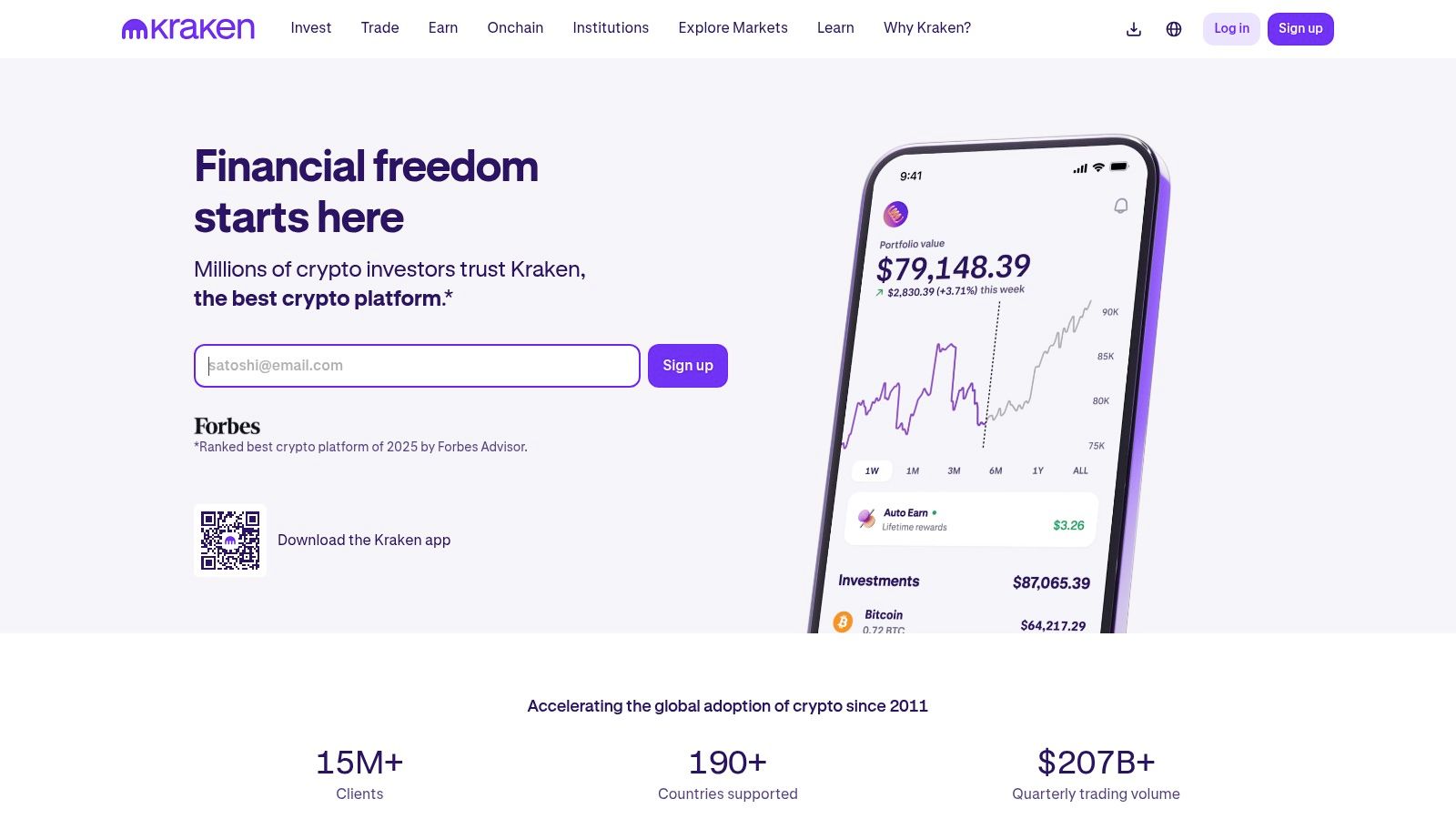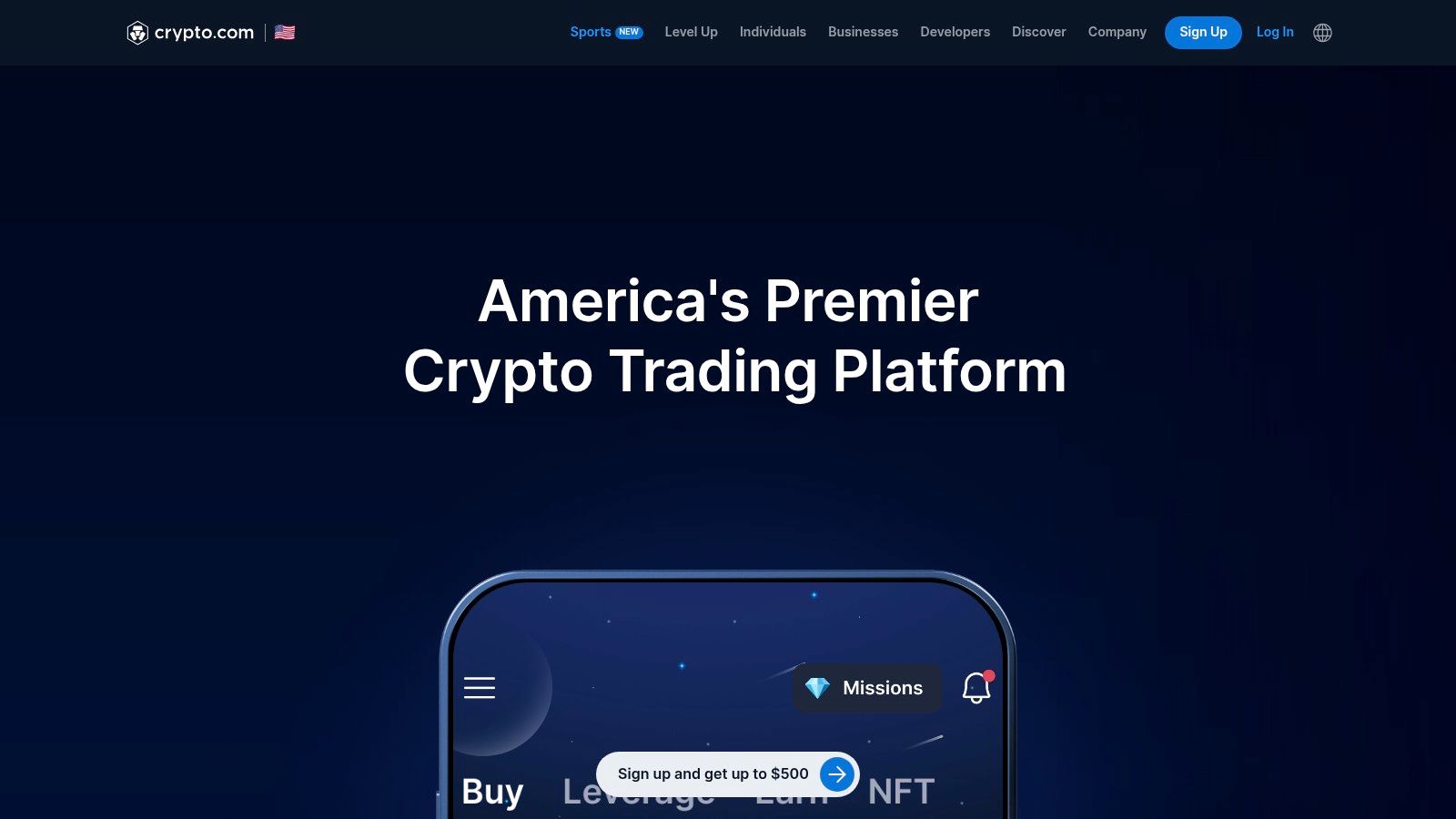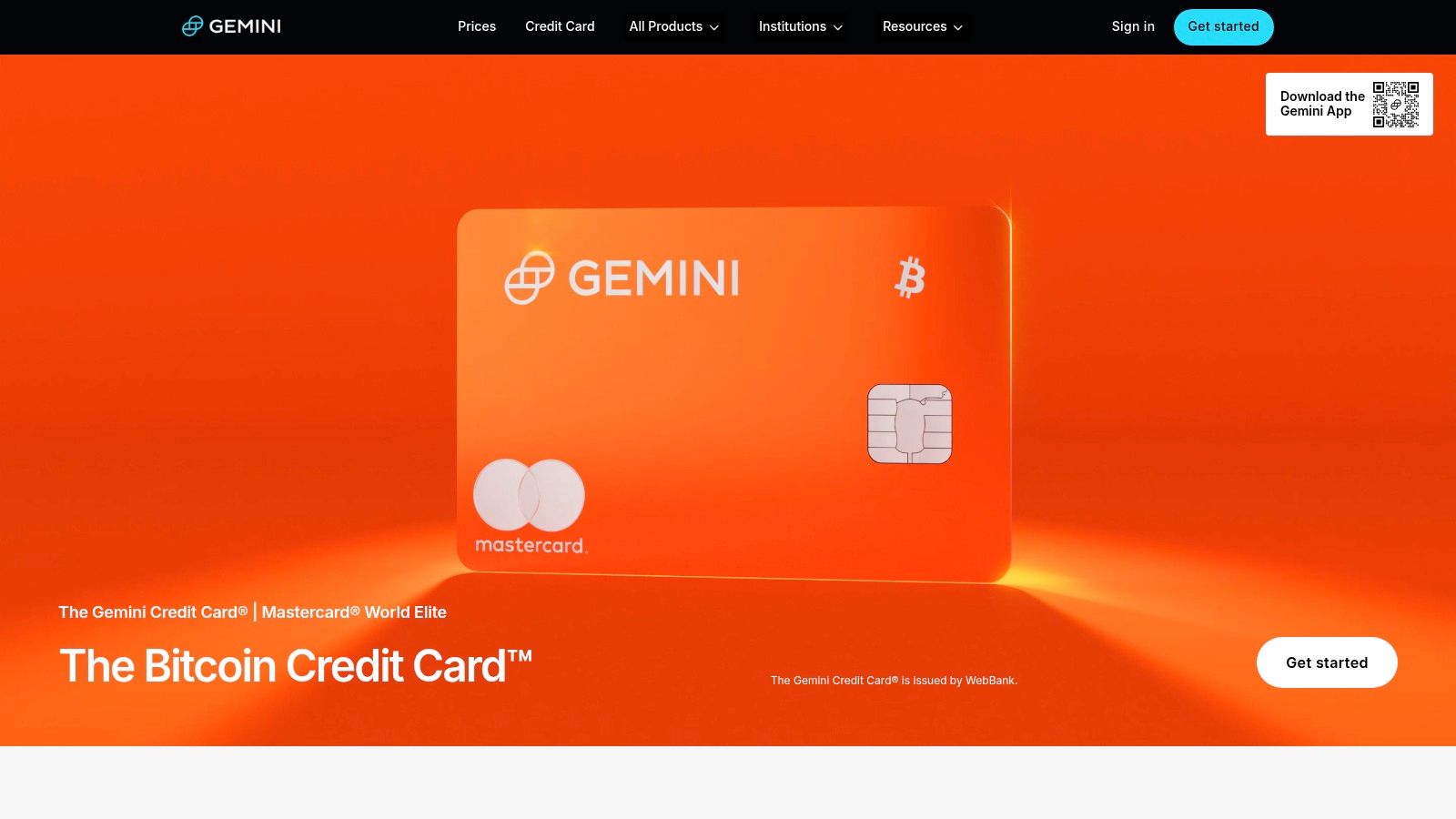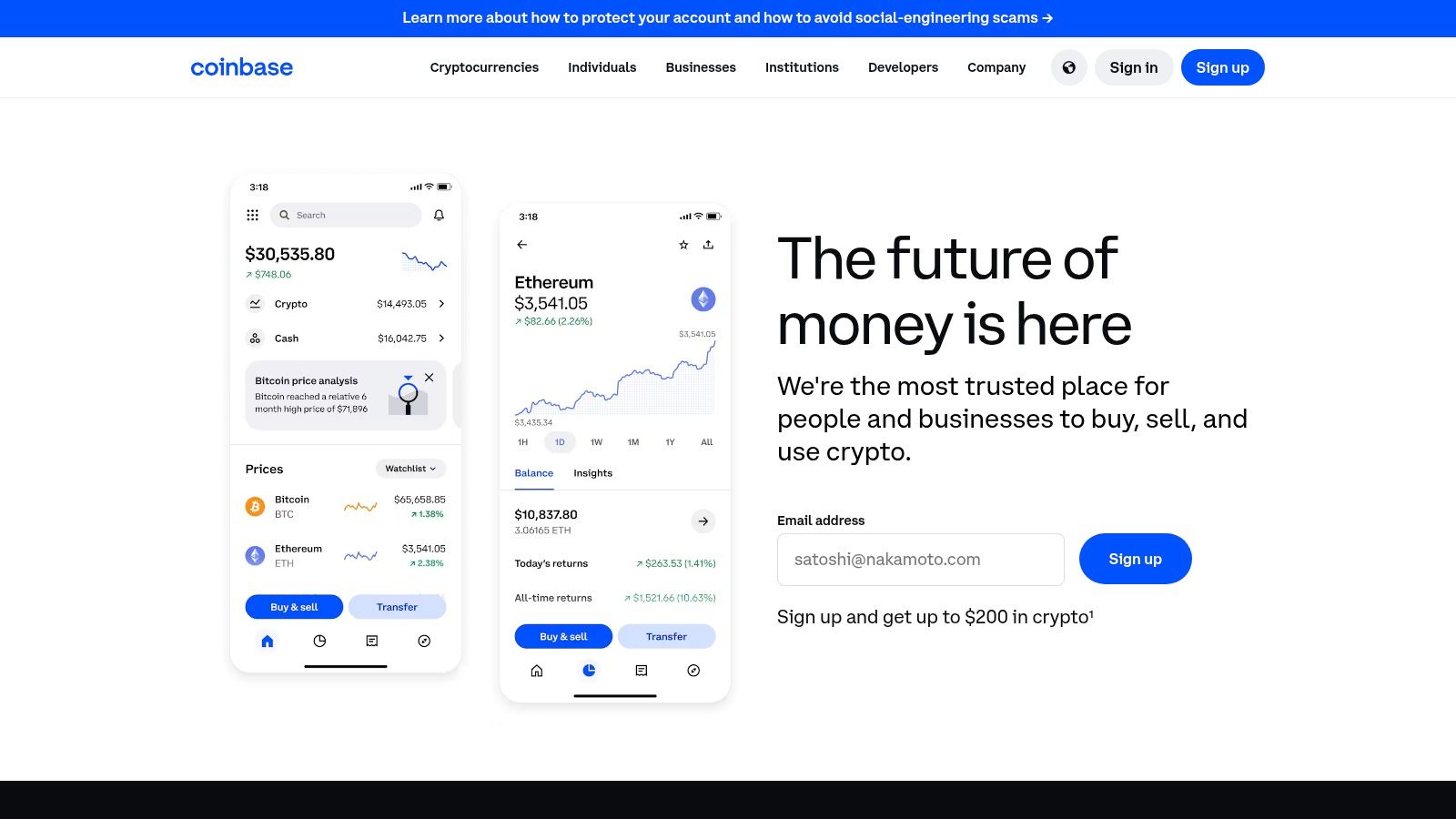In the world of cryptocurrency, high trading fees can quietly erode your profits. Every transaction, from buying your first Bitcoin to diversifying into altcoins, comes with a cost. But what if it didn't have to? Finding the cheapest crypto exchange is a strategic move to maximize your investment returns and keep more of your money working for you.
However, the "cheapest" platform isn't always the one with the lowest advertised fee. Hidden costs like network fees, withdrawal charges, and spread can make a seemingly low-cost option surprisingly expensive. This guide cuts through the noise. We will dissect the true cost of trading on today's top platforms, comparing not just maker-taker fees but also the less obvious charges that impact your bottom line.
This comparative overview provides a clear, actionable breakdown of each exchange, complete with screenshots and direct links to get you started. We'll explore how different fee structures affect various trading styles, from the occasional investor to the high-frequency trader. Understanding how different platforms operate is crucial for making an informed choice; you can learn more about various crypto exchanges and trading venues to build a foundational knowledge. Get ready to uncover the platforms, like vTrader, Binance, and Kraken, that offer genuine value, robust security, and the tools you need to trade confidently, ensuring more of your capital stays in your portfolio.
1. vTrader: The Zero-Fee Advantage for Maximum Profitability
For traders whose primary goal is to maximize returns by minimizing costs, vTrader presents a compelling and powerful solution. It distinguishes itself in a crowded market by offering a genuine zero-fee trading model, making it a frontrunner for the title of the cheapest crypto exchange. This isn't a temporary promotion; it's a core component of the platform's value proposition.
vTrader allows users to buy, sell, and trade popular cryptocurrencies like Bitcoin and Ethereum, plus over 30 other altcoins, without incurring any commission fees on these transactions. This direct cost-saving mechanism is particularly beneficial for active traders, where frequent transaction fees can significantly erode profits over time. By eliminating these costs, vTrader ensures that more of your capital works for you.
Key Features and User Experience
Beyond its standout fee structure, vTrader delivers a robust and well-rounded trading ecosystem suitable for various experience levels.
- Advanced Trading Tools: The platform integrates sophisticated analytical tools, real-time market data, and customizable charts. This empowers both novice and experienced traders to perform in-depth technical analysis and make data-driven decisions directly within the interface.
- Integrated Learning Hub: A unique feature is the VTrader Academy. This built-in educational resource offers interactive modules and tutorials to help users enhance their trading knowledge. As a compelling incentive, users can earn USDT rewards for completing modules, creating a gamified learning environment.
- Security and Compliance: Operating with a FinCEN registration, vTrader prioritizes the security of user assets within a regulated framework. This commitment provides a crucial layer of trust and reliability for investors.
- Seamless Accessibility: With a unified experience across its desktop and mobile applications, users can manage their portfolios and execute trades anytime, anywhere. This is complemented by 24/7 customer support and a $10 sign-up bonus for new users.
Practical Benefits for Traders
The combination of zero fees and comprehensive features translates into tangible advantages. A day trader, for example, can execute multiple trades without worrying about commissions cutting into their margins. Meanwhile, a new investor can use the VTrader Academy to learn the fundamentals, practice with a sign-up bonus, and invest without initial costs hindering their growth. The platform's transparent approach to pricing is a significant advantage, and you can learn more about vTrader's fee structure on their official site.
While vTrader excels in its fee-free model for core trading, prospective users should verify its availability in their specific geographic region. High-frequency traders may also want to seek more details on any potential costs associated with premium features or margin trading.
Platform Link: vTrader Official Website
2. Binance.US
Binance.US establishes its place as one of the cheapest crypto exchange options in the United States by offering a highly competitive and transparent fee structure. It is the American counterpart to the global Binance platform, designed specifically to comply with U.S. regulations while providing access to a broad range of digital assets. The platform caters to both new investors and seasoned traders with its blend of low costs and powerful features.
The primary draw for cost-conscious traders is its exceptionally low fee model. Standard spot trading fees start at a mere 0.1% for both makers and takers, which is already among the lowest in the industry. Furthermore, Binance.US offers zero-fee trading on select Bitcoin pairs, including BTC/USD and BTC/USDT, completely eliminating trading costs for these popular assets.

Why Binance.US Stands Out
Beyond its low fees, Binance.US provides a robust trading experience. It supports over 150 cryptocurrencies, giving users ample opportunity to diversify their portfolios. The platform includes advanced trading options like spot trading and staking, allowing users to earn passive income on their holdings. For those looking to deepen their understanding, you can learn more about trading strategies and market analysis to better leverage these advanced tools.
Its user interface is clean and intuitive, making it accessible for beginners, yet it doesn't sacrifice the advanced charting tools and order types that experienced traders demand.
Pros & Cons
| Pros | Cons |
|---|---|
| Highly competitive fees starting at 0.10% | Limited availability in some U.S. states (e.g., NY, TX, VT) |
| Zero-fee trading on major Bitcoin pairs | Fewer features compared to the global Binance platform |
| Extensive selection of over 150 cryptocurrencies | Customer support can experience delays during peak times |
| User-friendly platform with advanced trading options | |
| Discounts available for high-volume traders and BNB token holders |
How to Maximize Savings
To get the most value from Binance.US, consider holding Binance's native token, BNB. Holding and using BNB to pay for trading fees can provide an additional 25% discount, further reducing your costs. Also, take full advantage of the zero-fee BTC trading pairs to build your core crypto positions without incurring any trading expenses.
Website: https://www.binance.us/
3. Kraken
Kraken solidifies its reputation as a top-tier cheap crypto exchange by combining a long-standing history of robust security with a highly competitive, volume-based fee structure. Founded in 2011, it is one of the oldest and most respected exchanges, appealing to both seasoned professionals and retail investors who prioritize safety and advanced trading capabilities. The platform balances a comprehensive feature set with a transparent fee model that rewards active traders.
The core of Kraken’s low-cost appeal lies in its maker-taker fee schedule, which becomes progressively cheaper as trading volume increases. For its standard spot trading service, fees start at 0.16% for makers and 0.26% for takers, which is already competitive. However, for high-volume traders, maker fees can drop to an incredible 0.00%, effectively making it a zero-fee experience for market makers.

Why Kraken Stands Out
Kraken distinguishes itself with a powerful combination of security, asset variety, and advanced trading tools. It supports over 200 cryptocurrencies and offers sophisticated trading options like margin, futures, and staking, allowing users to execute complex strategies and earn passive rewards. The platform is registered as a Money Services Business with FinCEN and is known for its strong regulatory compliance. You can learn more about how established exchanges like Kraken influence the market by exploring the mission behind innovative trading platforms.
Its interface caters to a wide range of users. The standard Kraken interface is straightforward for simple buy and sell orders, while Kraken Pro provides the advanced charting tools, order types, and real-time data that experienced traders require.
Pros & Cons
| Pros | Cons |
|---|---|
| Competitive volume-based fees with maker fees as low as 0.00% | The advanced interface (Kraken Pro) may be intimidating for beginners |
| Exceptional security with proof-of-reserves audits | Limited availability and features in some U.S. states (e.g., NY, WA) |
| Wide selection of over 200 cryptocurrencies | Instant buy fees are higher than the Pro platform |
| Advanced trading options like futures, margin, and staking | |
| Strong regulatory compliance and long-standing reputation |
How to Maximize Savings
To achieve the lowest possible fees on Kraken, always use the Kraken Pro platform instead of the simpler "Instant Buy" feature, which carries higher costs. Monitor your 30-day trading volume; as you cross a new volume tier, your fees will automatically decrease for subsequent trades. If you are a market maker who places limit orders, you will benefit the most from the fee structure, especially at higher volume levels where fees can be eliminated entirely.
Website: https://www.kraken.com/
4. Crypto.com
Crypto.com has built a comprehensive digital asset ecosystem that positions it as more than just one of the cheapest crypto exchange platforms; it's a full-suite financial services provider. Its appeal to cost-sensitive investors comes from a competitive fee structure that rewards active traders and those who engage with its native token, CRO. The platform is designed to serve as an all-in-one hub for crypto enthusiasts, blending low-cost trading with a vast array of other crypto-related products.
The platform's fee model is highly attractive, with standard spot trading fees starting at just 0.075% for both makers and takers. This already low rate can be reduced even further through high-volume trading or by staking CRO tokens, making it a compelling option for traders looking to minimize costs as they scale their activity. This multifaceted approach ensures that both new and experienced users can find value.

Why Crypto.com Stands Out
What truly distinguishes Crypto.com is its expansive ecosystem. Beyond its trading exchange, it supports over 250 cryptocurrencies and offers a popular Visa card that provides crypto rewards on spending. The platform also includes a DeFi wallet for self-custody, an NFT marketplace, and earning products through staking, which allows users to generate passive income. If you want to understand how staking works and its potential benefits, you can explore more about crypto staking to see how it can complement your trading strategy.
Crypto.com also emphasizes security, employing robust measures like multi-factor authentication (MFA), cold storage for the majority of user assets, and numerous compliance certifications. It is registered with FinCEN in the U.S. and holds various licenses globally, adding a layer of trust and reliability.
Pros & Cons
| Pros | Cons |
|---|---|
| Competitive fees starting at 0.075% | Optimal benefits and lowest fees often require staking CRO |
| Vast ecosystem with a Visa card, DeFi wallet, and NFT marketplace | Customer support response times can be slow during peak periods |
| Extensive selection of over 250 cryptocurrencies | The platform's wide range of features can be complex for newbies |
| Strong security measures and regulatory compliance | |
| Discounts available through high trading volume and CRO staking |
How to Maximize Savings
To fully leverage Crypto.com's low-cost structure, staking CRO is essential. By staking the platform's native token, you can unlock significant trading fee discounts, better rewards on your Visa card, and higher interest rates on earning products. Carefully review the CRO staking tiers to find a level that aligns with your investment strategy and trading volume to ensure you are minimizing your expenses across the platform.
Website: https://crypto.com/
5. Gemini
Gemini carves out its niche in the competitive crypto landscape by prioritizing security and regulatory compliance above all else. Founded by the Winklevoss twins, this U.S.-based exchange operates as a New York trust company and is registered with the NYSDFS, offering users a high degree of confidence. While not always the absolute cheapest crypto exchange for every transaction type, its transparent and straightforward fee model appeals to investors who value safety and clarity.
The platform provides a user-friendly experience for beginners while offering a more advanced "ActiveTrader" interface for seasoned participants. For ActiveTrader users, maker fees can be as low as 0.20% and taker fees start at 0.40%, with rates decreasing significantly for higher-volume traders. Additionally, Gemini makes onboarding easy by offering free ACH deposits and withdrawals, eliminating common hidden costs.

Why Gemini Stands Out
Gemini's standout feature is its unwavering commitment to security and regulation. It provides industry-leading insurance coverage for digital assets held in its online "hot wallet," a feature that gives users peace of mind. This security-first approach is complemented by comprehensive educational resources available through its Cryptopedia, empowering users to make informed decisions.
The platform's interface is clean, making it simple for new users to buy, sell, and manage their crypto portfolios. Its focus on user empowerment and a secure trading environment makes it an excellent starting point for those new to the digital asset world.
Pros & Cons
| Pros | Cons |
|---|---|
| Strong regulatory compliance and security measures | Trading fees can be higher compared to some low-cost competitors |
| Insurance coverage on digital assets for added protection | Smaller cryptocurrency selection than other major global exchanges |
| Free ACH deposits and withdrawals | |
| User-friendly platform with excellent educational resources | |
| Transparent and structured fee schedule |
How to Maximize Savings
To reduce trading costs on Gemini, new and experienced traders should use the ActiveTrader interface instead of the basic buy/sell option. ActiveTrader offers a significantly lower, volume-based fee schedule that is more competitive. By planning trades and leveraging this advanced view, you can access maker-taker fees that are much more favorable, ensuring you get the most value from this highly secure platform.
Website: https://www.gemini.com/
6. Coinbase
Coinbase has built a reputation as one of the most accessible entry points into the world of cryptocurrency, particularly for those in the United States. While not always the absolute cheapest crypto exchange in terms of standard fees, its value proposition lies in a blend of user-friendliness, robust security, and an expansive ecosystem that caters to beginners and evolving traders alike. It simplifies the process of buying, selling, and managing digital assets, making it an excellent starting point for new investors.
The platform's fee structure is transparent, though generally higher than ultra-low-cost competitors. However, Coinbase offers a tiered experience. While the basic platform is designed for simplicity, the integrated Coinbase Advanced platform provides a more competitive fee model with maker-taker pricing, bringing costs down significantly for more active traders.

Why Coinbase Stands Out
Coinbase excels in creating a secure and educational environment. It supports over 200 cryptocurrencies, providing one of the widest selections available on a U.S.-regulated exchange. Its strong commitment to security is evident through features like mandatory 2FA, cold storage for the vast majority of user assets, and crime insurance coverage.
A unique feature is the Coinbase Earn program, which allows users to earn free crypto while learning about different blockchain projects. This not only lowers the barrier to entry but also helps build a more informed user base. The platform's registration as a Money Services Business with FinCEN further underscores its dedication to compliance and user protection.
Pros & Cons
| Pros | Cons |
|---|---|
| Extremely easy to use, making it ideal for beginners | Trading fees on the basic platform are higher than many rivals |
| Strong security measures and regulatory compliance | Customer support response times can be slow during peak periods |
| Vast selection of over 200 cryptocurrencies | Advanced trading features are on a separate platform (Coinbase Advanced) |
| Educational resources through the Coinbase Earn program | |
| Publicly traded company, offering greater transparency |
How to Maximize Savings
To reduce costs on Coinbase, users should transition from the simple trade interface to Coinbase Advanced as soon as they feel comfortable. This platform offers a tiered fee structure based on trading volume, with significantly lower maker and taker fees that are more competitive with other exchanges. Additionally, participating in the Coinbase Earn program is a great way to acquire small amounts of various cryptocurrencies at no cost, effectively offsetting some trading fees.
Website: https://www.coinbase.com/
7. Robinhood
Robinhood carves out its niche as a potentially cheap crypto exchange by extending its famous commission-free trading model to the cryptocurrency market. Originally known for stocks and ETFs, Robinhood allows users to buy and sell digital assets alongside traditional investments, all from a single, unified platform. This approach is particularly appealing to beginners who want a simplified, all-in-one financial hub without complex fee schedules.
The platform's primary value proposition is its zero-commission trading policy for cryptocurrencies. Unlike many exchanges that charge maker-taker fees, Robinhood does not charge a direct commission for crypto trades. It's important to note that while trading is "commission-free," Robinhood's revenue comes from the spread, which is the difference between the buy and sell price, a common practice for this model.

Why Robinhood Stands Out
Robinhood’s strength lies in its exceptional simplicity and integrated experience. It is designed from the ground up to be user-friendly, making it one of the most accessible entry points into crypto for absolute novices. The ability to manage a portfolio of stocks, ETFs, and crypto in one app eliminates the need for multiple accounts and streamlines investment tracking for diversified investors.
As a U.S.-based company, Robinhood is heavily regulated, registered with the SEC, and a member of FINRA, which can provide a sense of security for users new to the often-unregulated crypto space. For those with questions about how platforms like Robinhood operate, you can get answers to frequently asked questions to better understand the landscape.
Pros & Cons
| Pros | Cons |
|---|---|
| No direct trading commissions on crypto, stocks, or ETFs | Limited selection of cryptocurrencies compared to dedicated exchanges |
| Extremely intuitive and easy-to-use interface for beginners | Lacks advanced trading tools, charting, and order types |
| Convenient all-in-one platform for multiple asset classes | Does not offer staking or other crypto-earning features |
| Strong security features like 2FA and insurance coverage | Trading costs are built into the spread, which can be less transparent |
| Regulated in the United States, providing a familiar framework |
How to Maximize Savings
Since Robinhood's model is built on zero commissions, savings are inherent in every trade you make. To maximize value, focus on using the platform for its intended purpose: simple, straightforward buying and selling of major cryptocurrencies. Avoid frequent, small trades where the bid-ask spread could have a more noticeable impact. Instead, use it for building long-term positions in the available assets without worrying about accumulating fees.
Website: https://robinhood.com/
Cheapest Crypto Exchanges: 7-Way Comparison
| Platform | Implementation Complexity 🔄 | Resource Requirements ⚡ | Expected Outcomes 📊 | Ideal Use Cases 💡 | Key Advantages ⭐ |
|---|---|---|---|---|---|
| vTrader | Moderate – User-friendly with advanced tools | Low to Moderate – Multi-device apps | High – Commission-free trading boosts profit | Beginners to advanced traders seeking zero fees and education | Zero commission, strong security, integrated learning |
| Binance.US | Moderate – Standard exchange features | Moderate – Wide crypto support | High – Low fees with volume discounts | U.S. traders wanting diverse assets and regulatory compliance | Competitive fees, large crypto selection, regulated U.S. platform |
| Kraken | High – Advanced trading (futures, margin) | Moderate to High – Advanced tools | High – Volume discounts, professional focus | Experienced traders needing advanced options and security | Wide crypto range, strong security, futures & margin trading |
| Crypto.com | High – Multifunctional platform | High – Many services & staking needed | High – Trading plus financial products | Users wanting diversified crypto finance options | Low fees, varied products (cards, NFT), strong security |
| Gemini | Moderate – User-friendly but with compliance | Moderate – Focus on compliance | Moderate – Transparent fees, secure assets | U.S. users valuing regulatory adherence and education | Strong compliance, asset insurance, educational content |
| Coinbase | Low to Moderate – Simple interface | Moderate – Popular for beginners | Moderate – Wide crypto and security focus | Beginners seeking ease of use and regulatory assurance | Beginner-friendly, good security, large crypto variety |
| Robinhood | Low – Very simple interface | Low – Limited crypto selection | Moderate – Commission-free but basic tools | New traders wanting zero fees across multiple asset types | Zero commissions, easy to use, all-in-one investing platform |
Making the Final Choice: Selecting the Right Low-Cost Exchange for You
Navigating the landscape of crypto exchanges to find the absolute cheapest option is more than just comparing headline fees. As we've explored, the true cost of trading is a complex equation involving your personal trading style, volume, and priorities. Your journey to finding the most cost-effective platform begins with a clear understanding of your own needs.
The term "cheapest crypto exchange" is not a one-size-fits-all label. It's a relative concept that shifts based on user behavior. A platform with a zero-commission structure might be perfect for a beginner making infrequent trades, but a high-volume professional might find better value on an exchange with a tiered fee system that rewards their activity.
Aligning Platform Strengths with Your Trading Persona
To make an informed decision, you must look beyond the marketing and analyze how an exchange’s fee model and feature set align with your specific goals. Consider these distinct trader profiles and which platforms might best serve them:
- For the All-in-One Novice: If you are new to crypto and seek a platform that combines low costs with comprehensive educational resources, vTrader stands out. Its zero-commission model removes the initial barrier to entry, while its integrated learning modules empower you to grow your knowledge and confidence.
- For the High-Volume Professional: Active traders who execute numerous transactions daily should look closely at exchanges like Kraken and Binance.US. Their tiered fee structures are designed to become significantly cheaper as your trading volume increases, making them the most economical choice for serious market participants.
- For the Security-Conscious Investor: If your primary concern is the safety of your assets and regulatory compliance, a platform like Gemini may be the right fit. While its fees might not always be the absolute lowest, the premium you pay is for institutional-grade security and peace of mind.
- For the Multi-Asset User: Traders who want to manage their crypto alongside traditional stocks might find Robinhood’s simple, commission-free interface appealing. It offers a streamlined experience for those who value convenience over advanced, crypto-specific tools.
Many of these platforms also offer user incentives, from sign-up bonuses to rewards for bringing in new users. To better grasp how these programs work, it's helpful to understand the key differences between affiliate marketing and referral marketing, as these strategies directly impact the rewards you can earn.
Ultimately, the best choice is the one that minimizes your costs while maximizing your ability to execute your strategy effectively. By carefully evaluating fee structures, available assets, security protocols, and user experience, you can confidently select the cheapest crypto exchange for you. This strategic selection will empower you to trade efficiently and keep more of your hard-earned gains.
Ready to experience a trading platform that blends zero-commission trades with powerful educational tools? Discover how vTrader makes sophisticated crypto trading accessible and affordable for everyone. Sign up for vTrader today and start your journey on one of the most cost-effective exchanges available.

Steve Gregory is a lawyer in the United States who specializes in licensing for cryptocurrency companies and products. Steve began his career as an attorney in 2015 but made the switch to working in cryptocurrency full time shortly after joining the original team at Gemini Trust Company, an early cryptocurrency exchange based in New York City. Steve then joined CEX.io and was able to launch their regulated US-based cryptocurrency. Steve then went on to become the CEO at currency.com when he ran for four years and was able to lead currency.com to being fully acquired in 2025.


